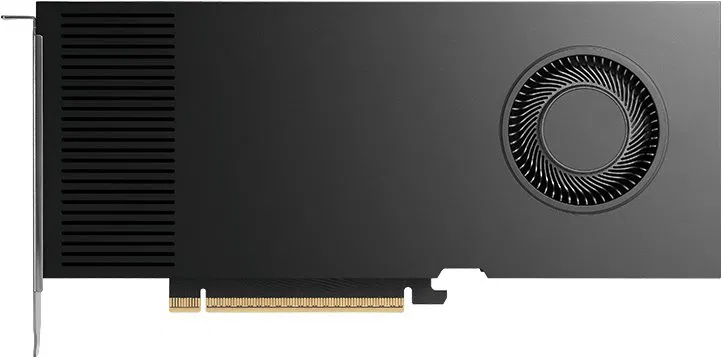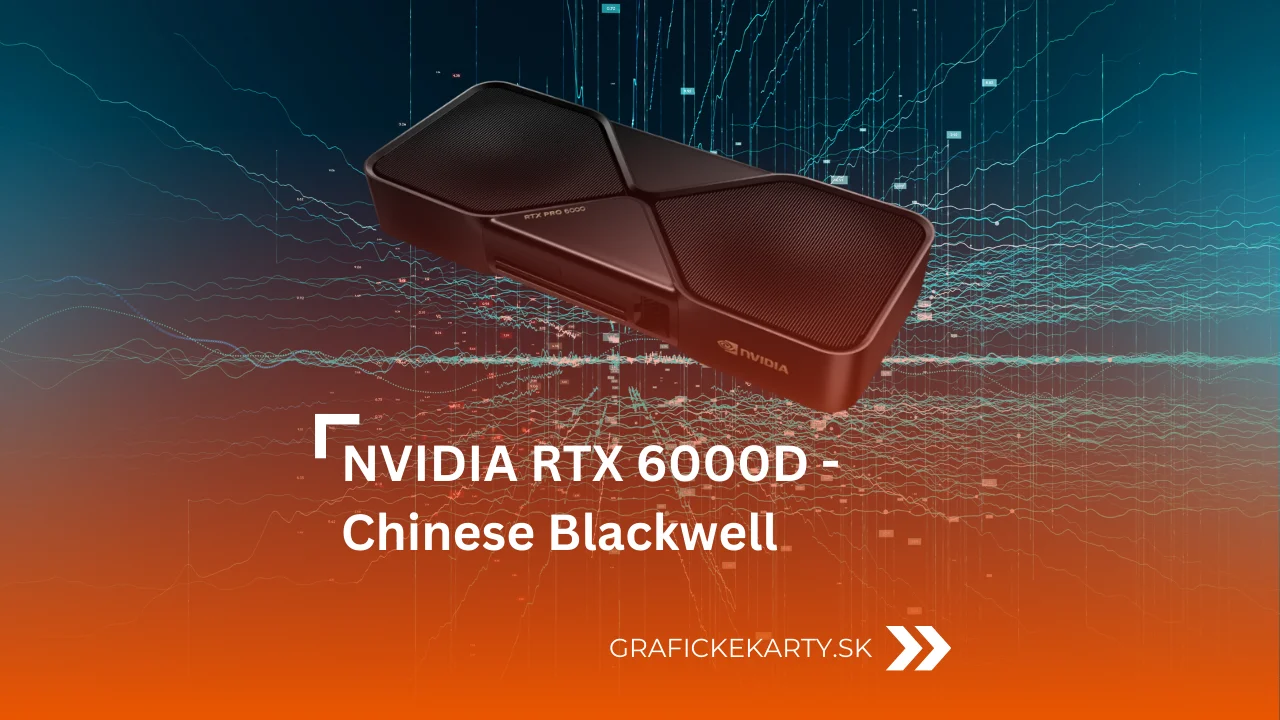NVIDIA is expanding its professional portfolio with another interesting model, which bears the name NVIDIA RTX 6000D. This is not a regular version of the well-known RTX PRO 6000, but a purpose-built card for the Chinese market, where there are strict export restrictions on AI hardware. Initial tests on Geekbench reveal what’s really inside – it’s a modified Blackwell chip configuration, large GDDR7 memory and lower clock speeds that put it squarely within the regulatory limits, but still maintain high performance for professional use.
A modified but slimmed down Blackwell chip
According to testing, the NVIDIA RTX 6000D has 156 active compute blocks – the Streaming Multiprocessor (SM) – which is equivalent to 19,968 CUDA cores. This is significantly less than the full version of the RTX PRO 6000 with 24,064 cores, but at the same time it is still a very powerful configuration, which clearly reveals that the card uses the same GB202 core, and thus NVIDIA hasn’t deprecated the chip – it has only deactivated a portion of the blocks to fall under the rules that determine the maximum allowed aggregate performance for AI accelerators heading to China.
With this move, the NVIDIA RTX 6000D remains compatible with the Blackwell software ecosystem, supports the same professional applications, and is ready for next-generation AI workloads. The difference is mainly in the target audience: instead of a global market, it’s heading exclusively to China, where it can fill the space between powerful consumer graphics and expensive server accelerators.
Memory configuration adapted to export limits
It is the memory configuration that has suffered the most. The NVIDIA RTX 6000D uses 84 GB of GDDR7, which is slightly less than the 96 GB of the full RTX PRO 6000. The memory bus width has also been reduced from 512 bits to 448 bits, which naturally reduces throughput. Still, this is a capacity that consumer cards can’t offer. For professional users, 84 GB means a lot of space to work with large datasets, physics simulations, high-resolution 3D scenes or various AI models that require massive VRAM.
Available Technical Specifications – NVIDIA RTX 6000D
According to the leaks, the core clock speed is approximately 2430 MHz, which is lower than the classic RTX PRO 6000 version. NVIDIA deliberately lowered the maximum performance in order to fit the card into the aforementioned export limits for the Chinese market, not only turning off some of the compute blocks but also modifying the clocking profile itself in order to make the RTX 6000D fit exactly into the allowed performance “ceiling”.
Although both cards are based on the same Blackwell architecture, their parameters differ at first glance. That’s why it’s worth taking a look at a direct comparison.
| Parameter | NVIDIA RTX PRO 6000 | NVIDA RTX 6000D |
| Architecture | Blackwell | Blackwell |
| Chip | GB202 (full configuration) | GB202 (modified configuration) |
| SM blocks | 188 | 156 |
| CUDA cores | 24 064 | 19 968 |
| Memory | 96 GB GDDR7 | 84 GB GDDR7 |
| Bus width | 512 bit | 448 bit |
| Boost clock | 2600 MHz | 2430 MHz |
| Market | Global | China |
The result is working graphics that remain compatible with Blackwell architecture technologies, Tensor cores and ray tracing units, but still meets performance standards. The same parameters also appeared in the attached Geekbench listing.

The test ran on a server build with an AMD EPYC 9654 processor with 192 cores, which is a common configuration for vetting professional GPUs. The OpenCL section shows the exact identification of the card, along with details of the number of compute units, available memory, and maximum core clock.
Summary – NVIDIA RTX 6000D
The RTX 6000D was created as a specific variant for the Chinese market, where it responds to local requirements and limits. It builds on the same Blackwell foundation as the RTX PRO 6000, but comes in a stripped down configuration that targets the segment between mainstream graphics and server accelerators. It’s a demonstration of how NVIDIA can tailor professional models to fit the exact market conditions for which they were created.

Professional performance for creators, engineers, and AI projects. NVIDIA RTX PRO delivers stability, accuracy, and next-generation reliable power.
